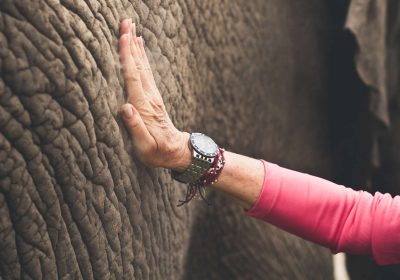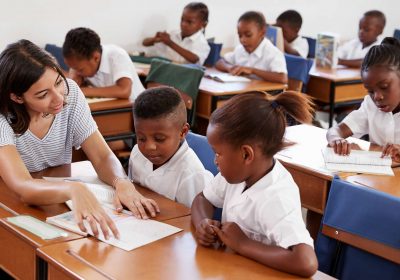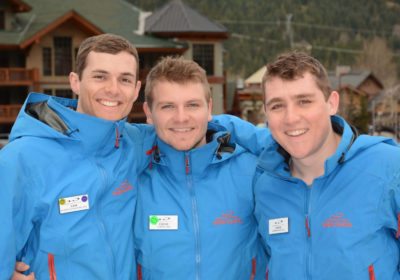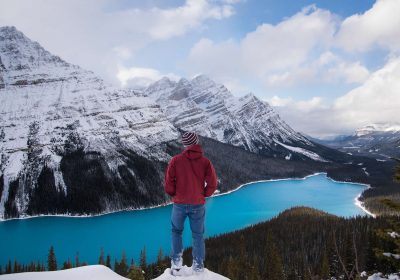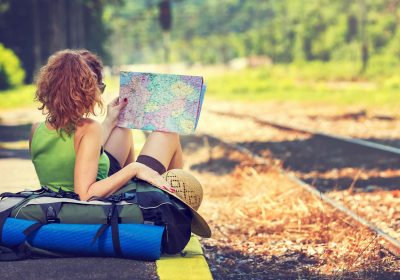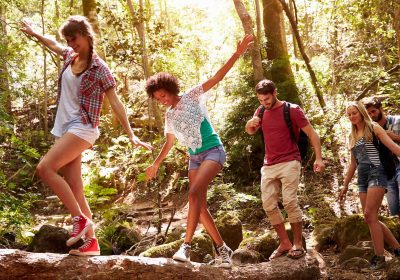I cannot now imagine not having the experience that I have just had and I don’t know why I deliberated about having a gap year so much. It was a tremendous few months.
I chose to go and volunteer in a small village just outside Arusha in the foothills of Mt. Meru in northern Tanzania with Oyster Worldwide, who provided a very useful 2 day induction course before departure. Mt Meru is an active volcano which, until its eruption 8000 years ago, was taller than nearby Mt Kilimanjaro. The soil is therefore very fertile, my village is nestled between lots and lots of banana trees and coffee plants, making it very pleasant place to live and work for 4 months!
When I was first greeted by my Tanzanian class at the Primary School, it was incredibly daunting. I had no idea how I was to control all seventy five Swahili jabbering children. However I soon settled into it and became so busy with lesson planning, books to mark and trips to Arusha to catch up with the other volunteers, that I didn’t really have much time to think about it. When you throw in reading club, and helping out at local orphanages the weeks flew by and while 4 months sounded like forever before I left, it quickly became a very short amount of time.
Getting used to living the African way of life was something I did find a little frustrating to begin with. They live ‘pole pole’ which means slowly. If we wanted to go into town, we needed to get two dala dalas (the local buses and cheapest mode of public transport). At the top of the hill I sometimes waited up to 45 minutes for the dala dala to fill up – this means if you need to be in town for a certain time; you end up being either incredibly late, or incredibly early, but never on time! If you are meeting another ‘mzungu’ (white person) then this is an issue, but if meeting a Tanzanian, no problem, they will be late too!
Mama and Baba (my Tanzanian parents) lived next door to us with their grandchildren Linda and Doglas. In order to get another source of income, they had moved out of their house and rented it to volunteers, and they lived in the outhouses. Life was never quiet despite being deep in the countryside. The cockerel crowed at all hours of the day and night, and the cows lived in our garden, shaking our house whenever they galloped about. Rogue chickens often found their way into the house. Cold showers and doing our washing were all fine, until the water supply failed and we had to go and get it from the river 20 minutes walk away. Electricity sounds great until you get a power cut at around 7pm every evening, just when you need to cook supper. Cooking was another challenge, but once we realised our diet couldn’t have much variety it all tasted delicious. Fresh aubergines, tomatoes and peppers daily sounds lovely until you realise that is all you have to eat with your pasta and rice. There is only so much you can do with them on a gas hob! Local food was another culture shock. I soon learnt that ugali was something to avoid but rice and beans is very tasty, and so is ‘chips maille’ (omelette with chips in!).
I helped out in 2 orphanages and the Plasterhouse. The orphanages were very different places. The one in my village had had quite a bit of funding from Germans, but the African ladies who ran it desperately needed help in feeding the children, and the children just wanted our love and attention. The children there were aged between newborn and six, and most were there because their mothers had died in childbirth; other mothers had died from AIDS, diabetes and drug overdoses. Many still had fathers who visited them, but refused to raise them single-handedly because this is not accepted in their culture. The second orphanage I visited was on the other side of town. It was a day-care centre for children whose parents work or cannot look after them during the day. About thirty younger children go for their early education there, and at the weekends there are in excess of two hundred children who spend their days there. The Plasterhouse has been set up to help care for Masai children who require surgery. They go to there before to prepare, and afterwards to recover from their operations. They are then returned to their parents out in the bush.
Climbing Kilimanjaro was something which I wanted to do before I went out there. I ended up climbing with a group of volunteers who came out with a different organisation. I found this quite refreshing as it was nice to get to know some new people. It was the best experience ever, but also one of the hardest things. Getting to the top was amazing, but I soon realised I had to get back down again – that was the worst bit! We climbed the Machame route over 7 days, and after a midnight start under the full moon, reached the summit at 6:20am, April Fools Day, just as the sun was rising. Between the twelve of us, we had 29 porters and 5 guides; it is a major industry in the area. The night after we finished, we were put up in a hotel for the night – my room was on the top floor – ouch…my knees!
Zanzibar was a welcome break from teaching, although the 10 hour bus journey to Dar es Salaam was a bit of a chore, particularly as we missed our boat by 5 minutes. Once we arrived it was idyllic, and very very hot, especially at night with no fans as there was no electricity on the entire island! The main electricity cable under the sea from the mainland had been broken since November and was mended 2 days after we left. We snorkelled off Mnemba Island and saw all sorts of fish I never really thought existed. The night food market in Stonetown was very impressive and I tried all kinds of new food including white shark, Zanzibar pizzas and coconut bread.
Safari was something that was arranged through Oyster, and I appreciated not having to organise it myself when I was out there – I don’t think I would have had time! It was an excellent few days, although we did all find ourselves getting more excited about the food and hot showers at the hotels than about the animals! We went to Lake Manyara, the Serengeti and the Ngorongoro Crater, and saw all of the ‘big five’ animals during the 4 days.
I went in the middle of January just before the start of the rainy season. The first few weeks were very hot, but when the rain started it became much more bearable and a bit like an English summer! The rain was intermittent, and it never rained all day, only for an hour or less each time.
Great article Alice, thank you very much!
For more information on Tanzania, check out our Tanzania webpage or email Roger at [email protected]








